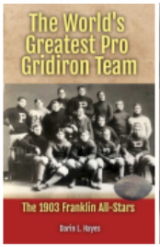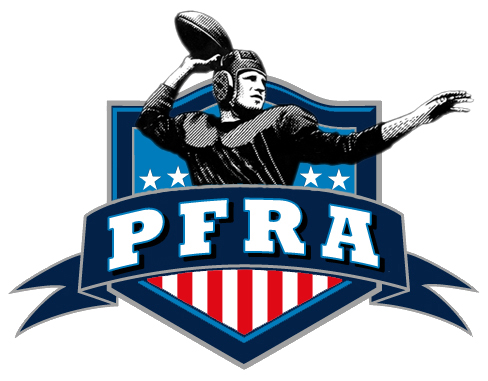Uncovering Football's Forgotten Numbering System with Timothy P. Brown
Join Darin Hayes as he delves into a fascinating exploration of an alternative numbering system in football history with Timothy P. Brown from footballarchae... — www.youtube.com
Darin Hayes and Timothy P. Brown engage in a rich exploration of the history of player numbering systems in American football, a topic that reveals much about the sport's evolution.
Of course, this discussion all stems from Tim's original article titled: Factoid Feast I.
The audio-only podcast of the discussion can be found at: The Mystery of Football's Numbering: What Could Have Been.
The episode opens with Brown discussing the lack of a standardized numbering system prior to 1940, highlighting how players could choose any number they desired, leading to a chaotic situation on the field. Brown references a pivotal article written by Bob Balfe, which proposed a systematic approach to numbering, suggesting that backs wear numbers 1 through 4 while linemen should be designated numbers 5 through 11. This notion, while innovative, was not adopted until the NCAA established its own rules in 1941, which categorized players based on their positions and assigned specific number ranges accordingly.
The discussion delves into the practical implications of these numbering conventions, particularly in the context of officiating and game strategy. As football evolved into a two-platoon system, the need for clarity in player identification became crucial. Brown explains how the established numbering system aids officials in determining eligibility for passing plays and how it has become an integral part of the sport's infrastructure. The conversation also touches on the historical resistance to change by certain coaches who preferred more traditional methods, leading to entertaining anecdotes about teams that defied the norm by utilizing unique numbering schemes. This backdrop serves not just as a historical account but also as a reflection on how football has adapted over time, balancing tradition with the need for modernization.
Listeners are treated to a blend of historical facts, insightful commentary, and engaging stories that paint a vivid picture of American football's past. Hayes encourages listeners to visit footballarchaeology.com for more in-depth exploration of these topics, emphasizing the importance of understanding the historical context of the game. The episode thus serves not only as an informative piece on numbering systems but also as an invitation to appreciate the rich tapestry of football history, highlighting the contributions of individuals like Bob Balfe and Timothy P. Brown in preserving and sharing these fascinating narratives.
Takeaways
-The podcast discusses the evolution of player numbering in American football, highlighting its history.
-Timothy P. Brown explains Bob Balfe's proposed numbering system for football players from 1940.
-The NCAA standardized football player numbering in 1941, influencing how players are identified today.
-The discussion covers the rationale behind different numbering systems for various player positions.
-There was a time when players wore four-digit numbers, showcasing historical resistance to standardization.
The podcast also touches on the potential for future changes in numbering conventions.










